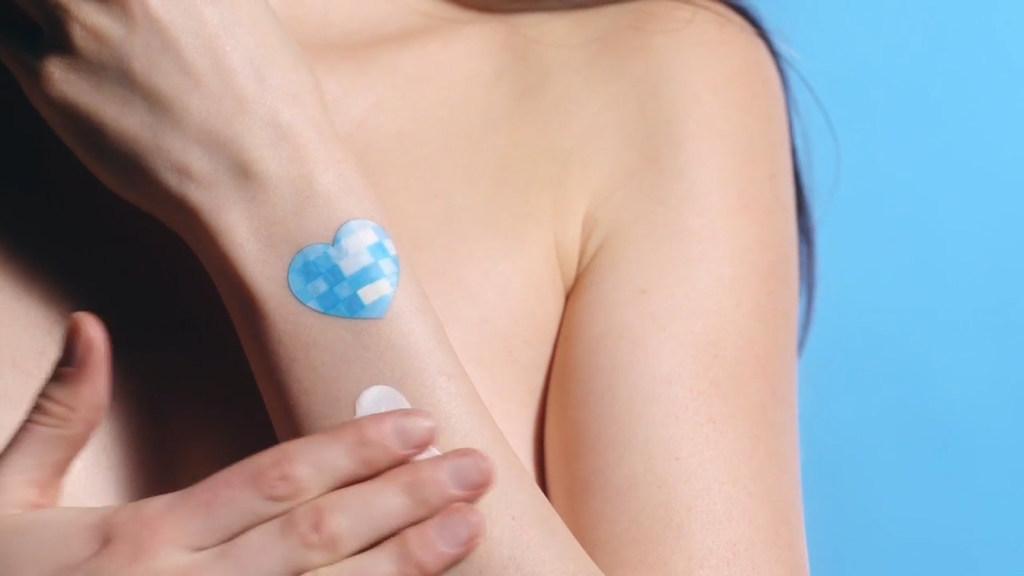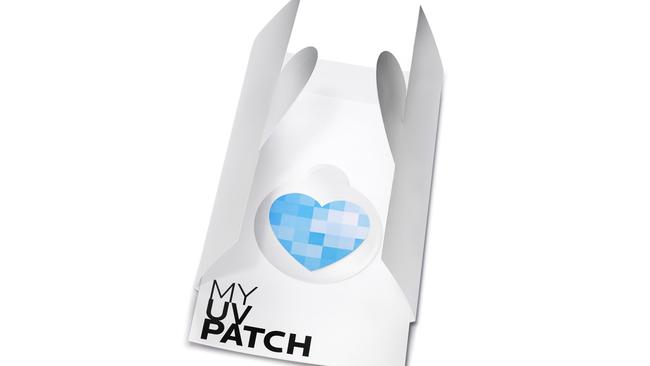Could this patch help prevent skin cancer?
FOR many, the question of when to reapply sunscreen is a bit of a mystery. But this wearable UV sensor could take the guesswork out of sun protection.

AS AUSTRALIANS we have the sun smart message drummed into us from a young age.
And rightly so — we have the highest incidence of skin cancer worldwide, and melanoma, the deadliest form, is projected to be the fourth most common cancer in Australia this year.
It kills more people than car accidents.
But to be frank, sunscreen is still a bit of a mystery to many. How often do you need to reapply? The sun is stronger on certain days, we have different skin types, and you may be getting UV damage when you’re not even aware (for example, through the window when you’re at your desk, or when you’re driving your car).
The scientists at L’Oreal’s Technology Incubator in the US believe they’ve developed a bit of a game-changer, and no one will benefit from it more than us Aussies.
Today they launched My UV Patch in Australia — a stretchable skin sensor about the size of a 50c coin that is being described as a the first “beauty wearable”. The aim is to help consumers educate themselves about sun protection.

The patch is a transparent adhesive that contains photosensitive dyes that factor in the baseline skin tone and change colours when exposed to UV rays to indicate varying levels of sun exposure (it’s about half the thickness of an average strand of hair, so you really aren’t aware that you’re wearing it).
You take a photo of the patch when it’s on your skin and upload it to the La Roche-Posay My UV Patch mobile app, which analyses the varying photosensitive dye squares to determine the amount of UV exposure you’ve received. The app also takes into account a wearer’s hair and eye colour, UV sensitivity, GPS location and ozone concentration.

It is designed to be worn for up to five days, meaning wearers can sleep, exercise, shower or swim with the patch, while applying their sun protection over it to measure their UV exposure in real time.
“Connected technologies have the potential to revolutionise how we monitor the skin’s exposure to various external factors — including UV — and can inform consumers how to protect against them,” said Guive Balooch, global vice president of L’Oréal’s Technology Incubator.
“We wanted to design a patch that was thin, comfortable and virtually weightless so people would actually want to wear it.”
My UV Patch will be available for free from participating dermatologists, and with the purchase of La Roche-Posay sunscreen products from more than 800 pharmacies Australia-wide, including Priceline, Chemist Warehouse and Terry White Chemist chains from October, as well as online.
And here’s a fun fact — they tested the patch against a $700 dosimeter machine and it performed with equal accuracy.
Pretty good for a freebie, really.

